Looking for a quick kids’ science experiment that’s sure to wow little scientists?! This simple buoyancy activity requires just a few common household supplies. Kids will love learning why things sink and float in this easy, hands-on experiment!
Follow the simple step-by-step below and then grab 30 more easy-to-follow science experiments kids will beg to repeat (plus a no prep science journal to keep track of their results!) in our shop!
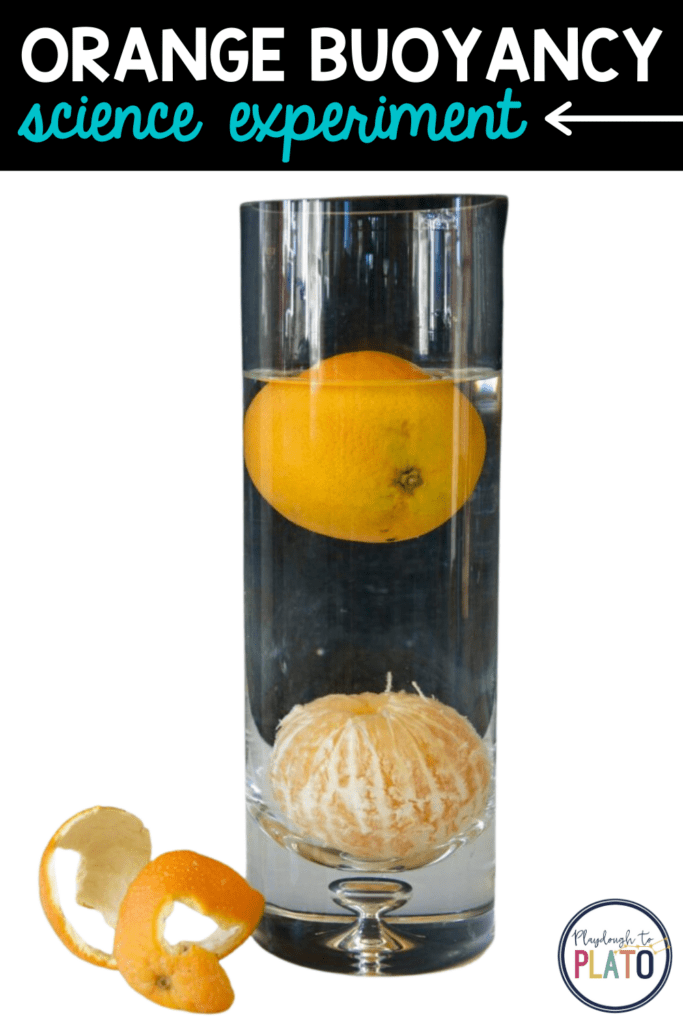
Playing in pools, floating down rivers, and bobbing about the ocean in their PFDs…
This summer has given us plenty of opportunity to see buoyancy at work in everyday life.
My kiddos loved figuring out just what helps keep them afloat with this oh-so-simple twist on the classic sink or float experiment.
And I loved that this experiment took mere minutes to complete!
Getting Ready
This experiment was ridiculously easy to set up!
I grabbed a tall glass vase (a large bowl works, too), an orange, and water and we were ready to roll.
Kids’ Science: Sink or Float?
I called over my kids and asked them if they thought the orange would sink or float in water. They both predicted that the orange was heavy and would sink.
Next, I had each child pour water in the vase until it was about 3/4 full.
Then, we plopped the orange in to see if their guess was correct.
The kiddos were pretty amazed to find out they were wrong and the orange actually floated!
After they tried to sink it by pushing and poking it under the water, I removed the orange and asked them to peel it.
I asked them if they thought the PEELED orange would sink or float and they both guessed that it would still float because it was now smaller with the peel removed.
Wrong again! The orange sank to the bottom.
Now they were thoroughly confused. They continued to take the peeled orange in and out of the water to see if they could somehow get it to float again but no matter how hard they tried, nothing worked.
The Science Behind It
Why is it that a peeled orange sinks even though it is lighter than an unpeeled orange? The secret lies in its peel!
Buoyancy is the tendency of an object to float or sink in water or any other fluid.
Whether an object is buoyant is determined by Archimedes’ Principle which states that any object in a fluid is buoyed up by a force equal to the weight of the fluid displaced by the object.
When the orange is placed in water, there are two forces working on it in opposite directions: gravitational force pulls the orange down while buoyant force pushes it up.
Gravity pulls the orange down with a force equal to the weight of the orange, while buoyant force pushes the orange upward with a force equal to the weight of the water that the orange displaced.
If the orange can displace a volume of water that equals (or is greater than) the weight of the orange, then it will be buoyant and float.
While making the orange weigh slightly more, the peel of an orange helps displace enough water to make the unpeeled orange buoyant.
The peel is also full of tiny pockets of air that make the unpeeled orange less dense than water – and the orange floats.
When you remove the peel, the orange no longer displaces enough water to overcome gravitational force. The orange becomes more dense than water and it sinks.
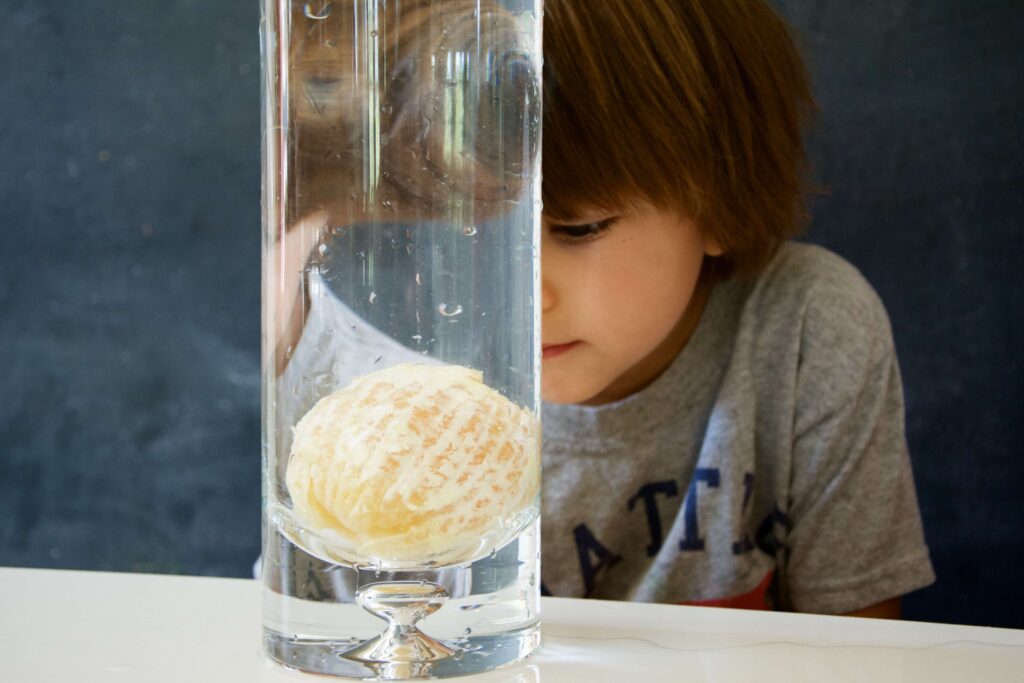
To really make this experiment relevant to my kiddos, I explained that the peeled orange was similar to them in a pool. When they curl into a ball and make themselves smaller, they sink to the bottom.
But since their life jacket is made of foam and contains tons of air pockets, when they put one on, they can suddenly displace more water while becoming less dense, and they easily float.
More Simple Science Kids Will Love
Inspire kids to LOVE science with 30 more jaw-dropping experiments they’ll beg to repeat! Grab 30 easy-to-follow science experiments (plus a no prep science journal to keep track of their results!) in our shop!
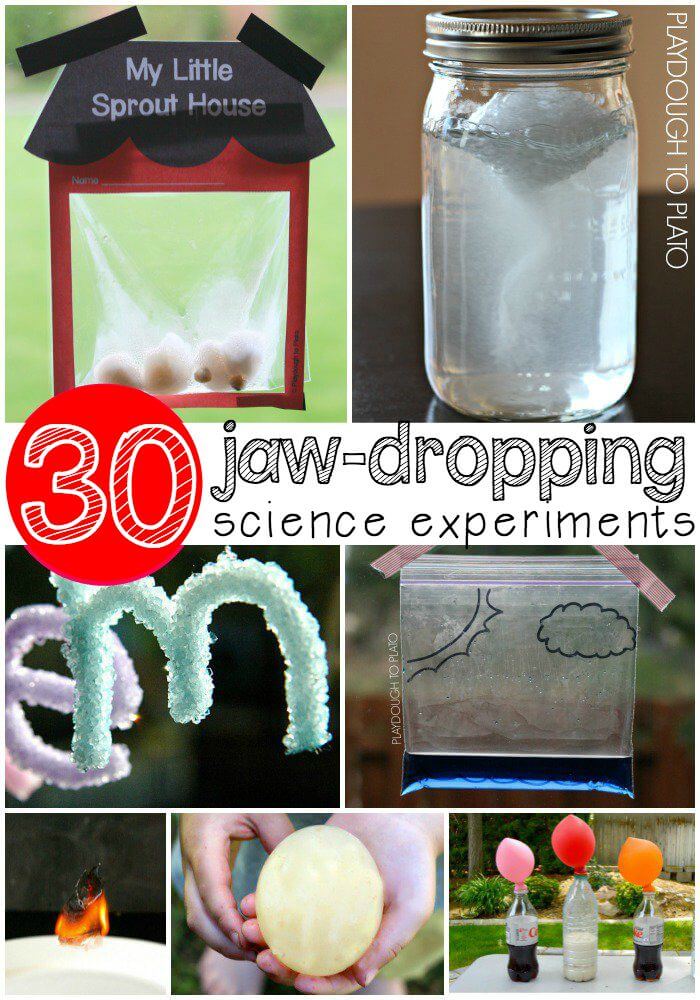



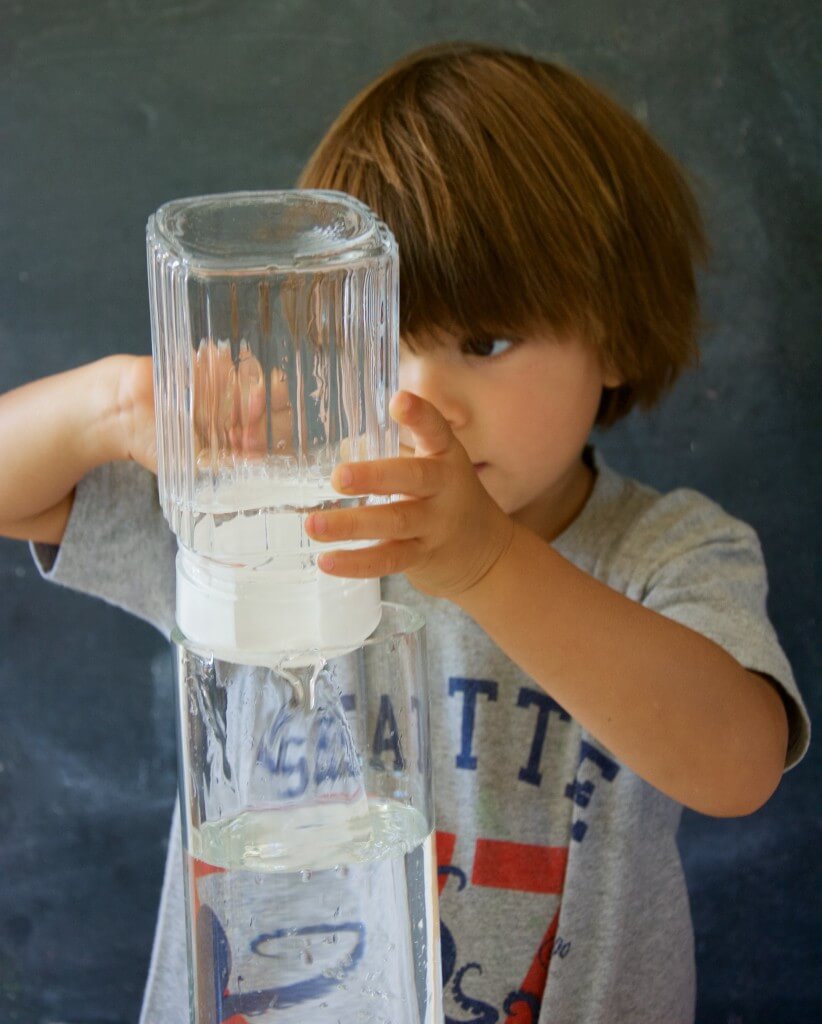
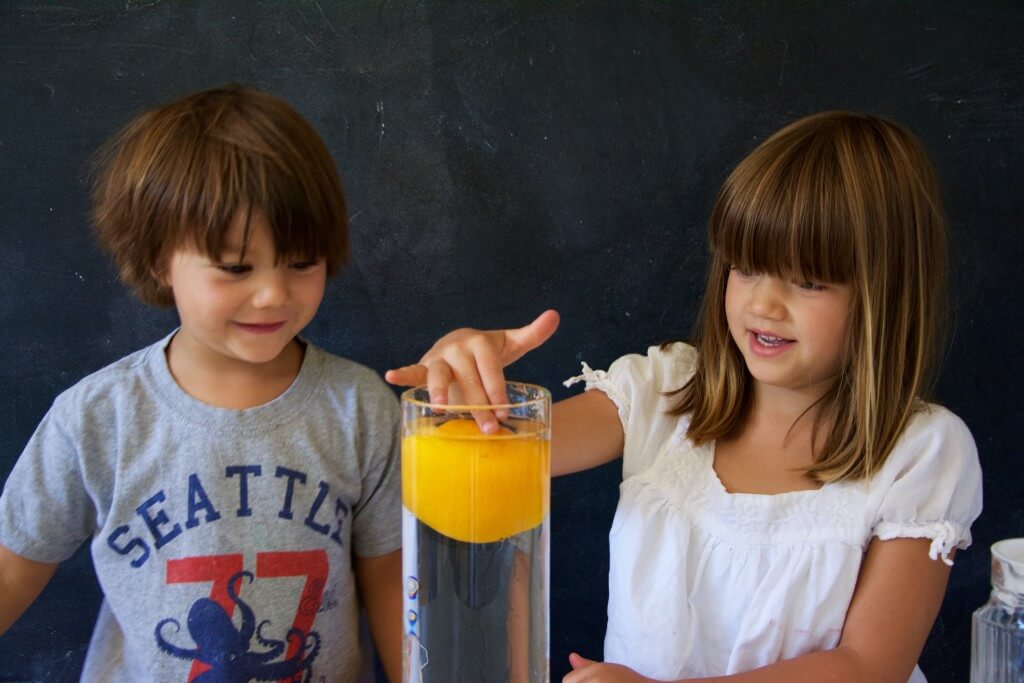
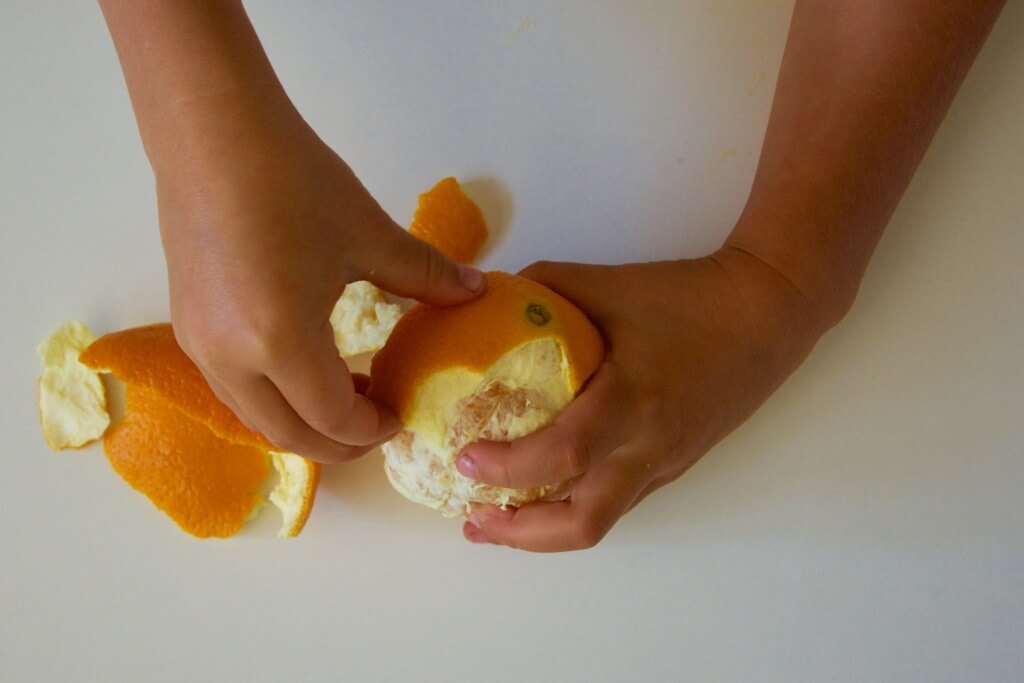
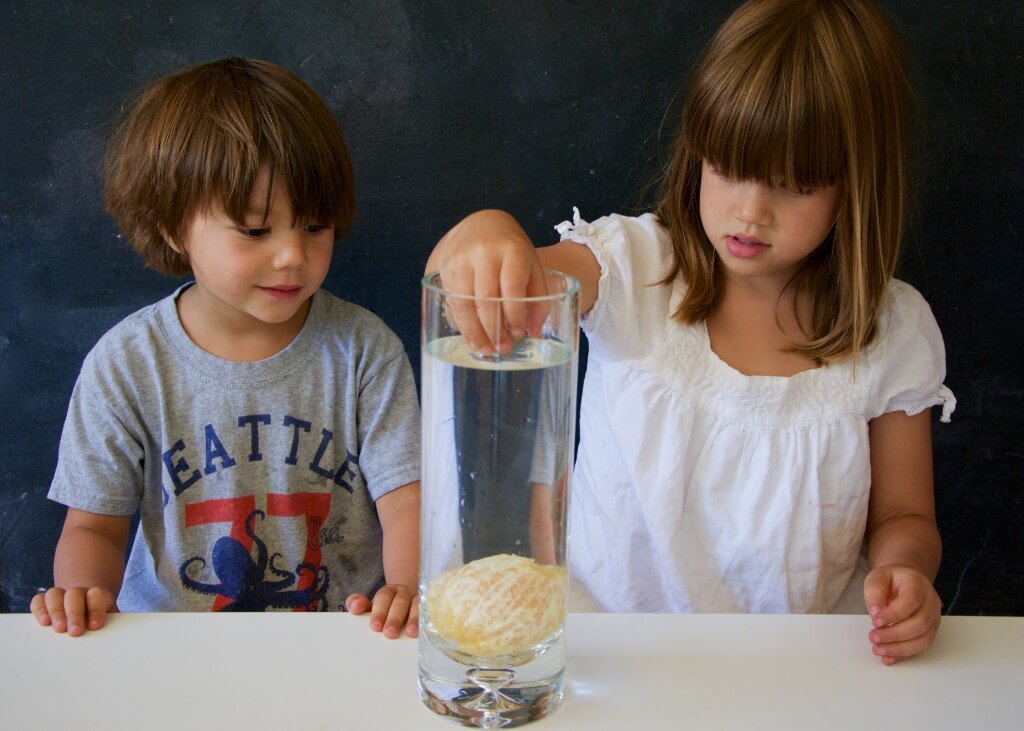


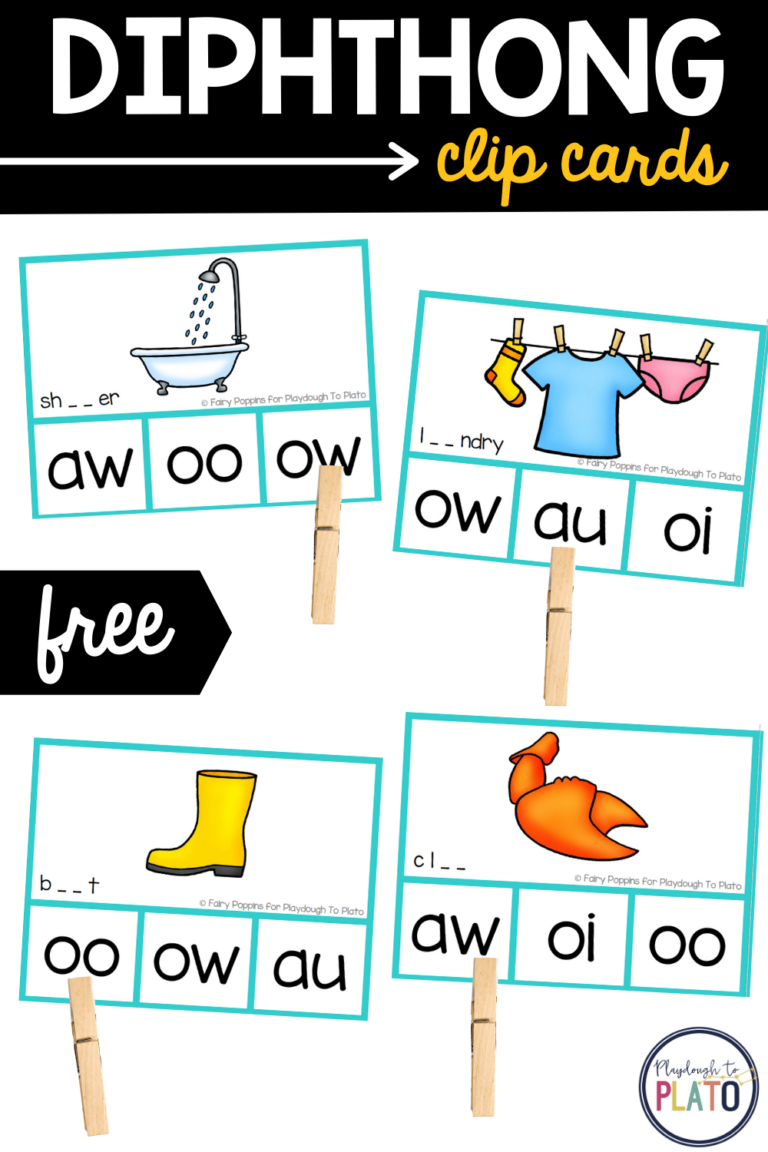

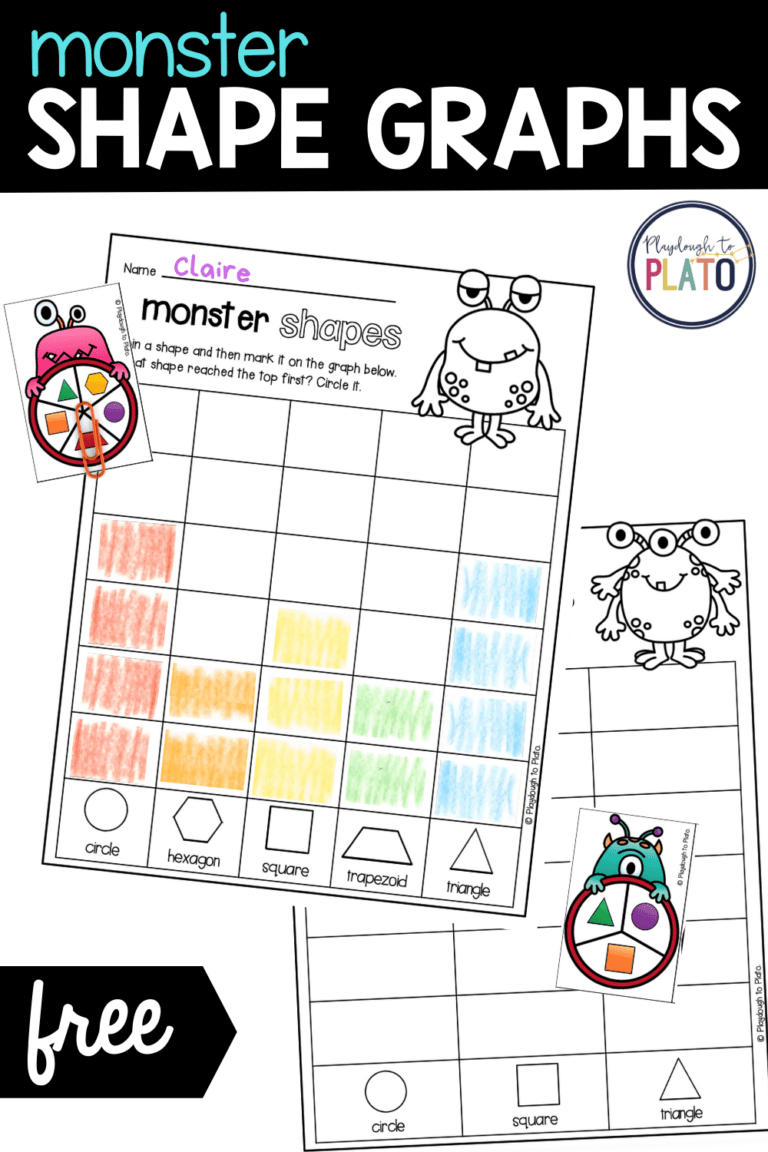
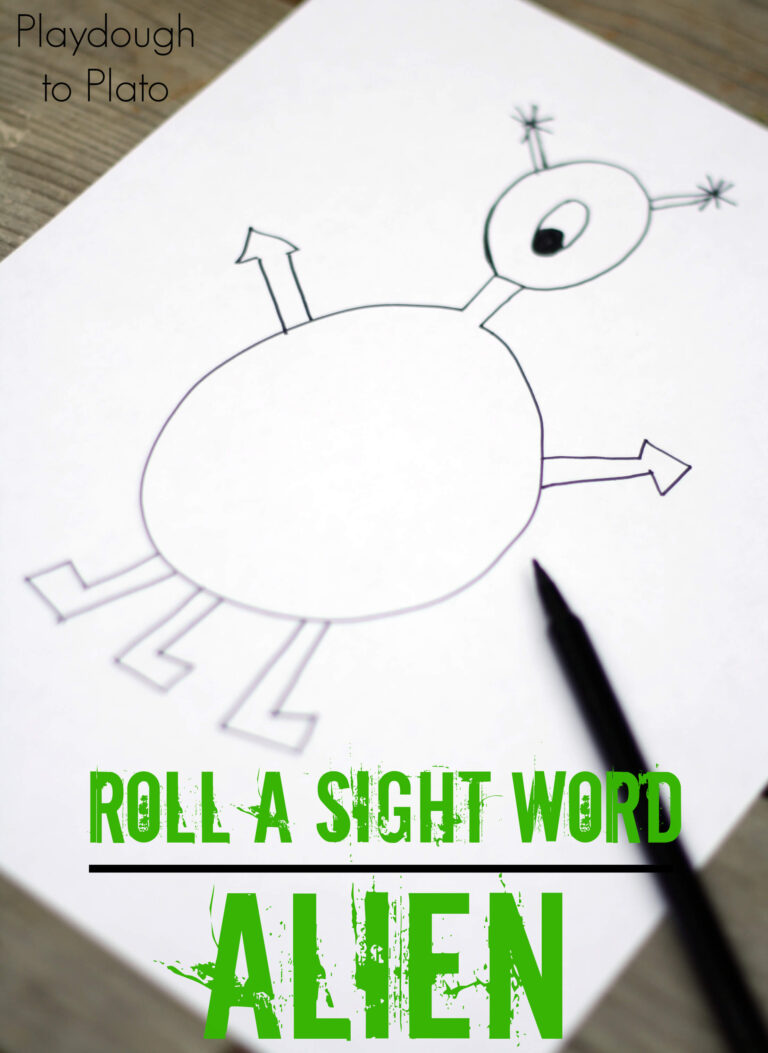
60 Comments